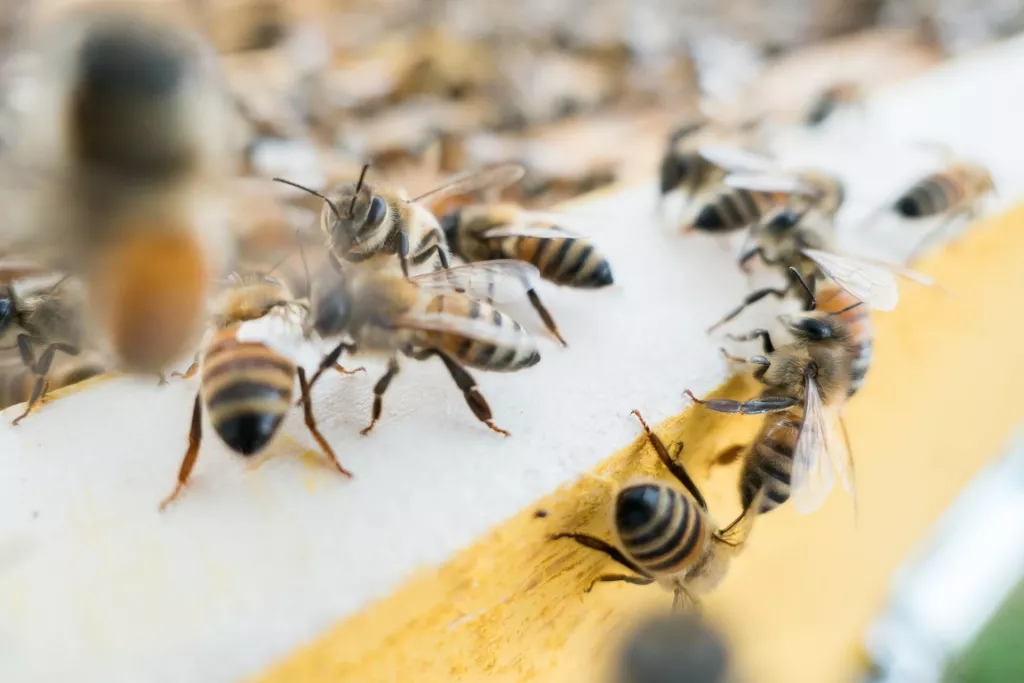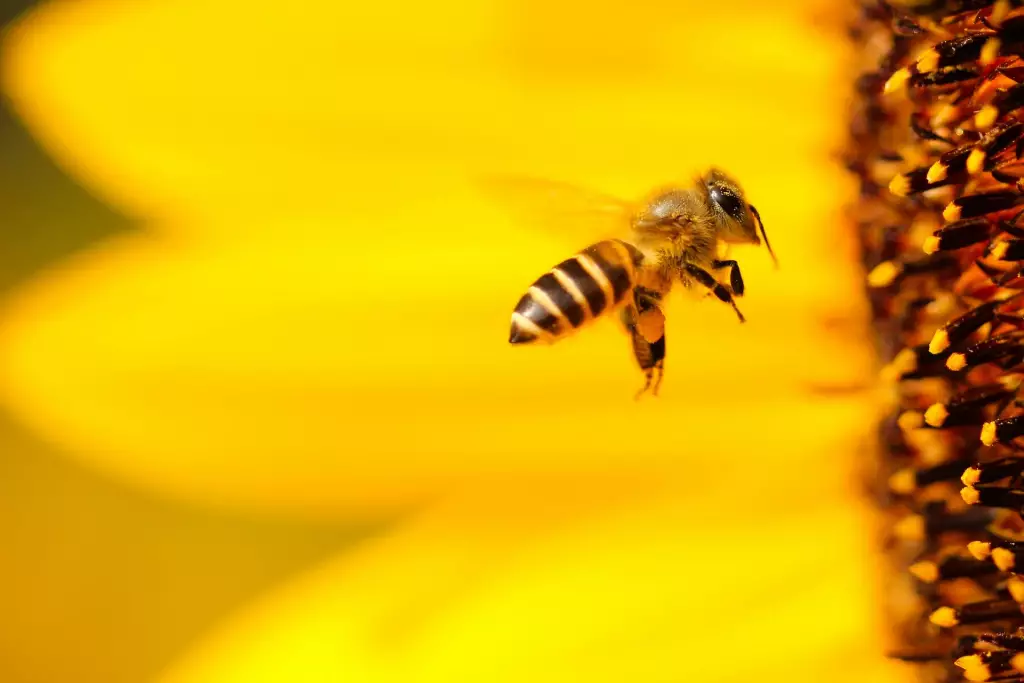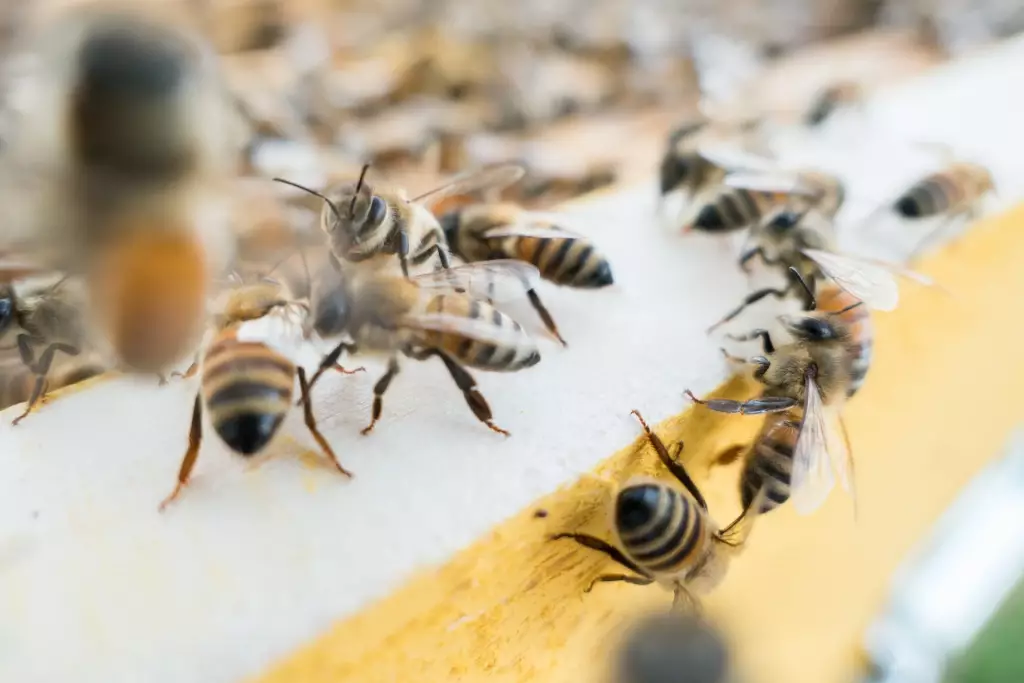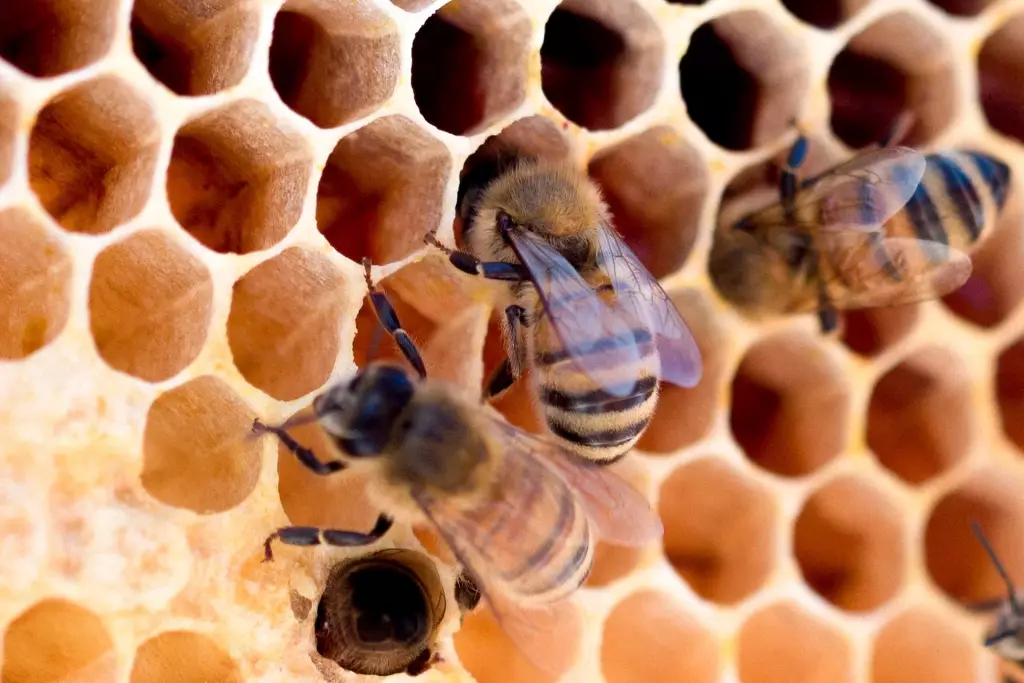How Do Bees Make Honey? (Step-by-Step Process Explained)
It takes 12 bees to make a teaspoon of honey. Tons of work goes into creating this sweet, healthy, & delicious syrup — but some of the steps are not what you think.
Forager bees collect nectar and bring it back to the hive, where house bees begin the process of chewing and regurgitating. Later, the nectar is packed into cells and dehydrated. Once the water content has been reduced significantly, the cells are sealed with a wax cap.
From start to finish, creating honey takes a lot of hard work and collaboration. It's a complex operation that takes the efforts of an entire hive. In this guide, I'll explain the detailed process step-by-step, so that after reading it you'll know exactly what's involved.
Summary
- The honey-making process can be separated into three main categories based on the general activity: collection, conversion, and dehydration.
- Female worker bees forage for nectar, return to the hive, pass it from one bee to another, dry it at the combs, and then cap it.
- Ethical beekeeping is a crucial aspect of helping honeybees thrive as part of the earth's ecosystem, so invest in natural methods of fertilization with native flora and pest control for your apiary.

On this page:

Step 1: Collection of Raw Materials
Foragers collect nectar and pollen
The first step of making honey is to find flowers and crops that produce nectar. The older honeybees in the colony fly out to forage and use their antennae to detect sources up to two kilometers away. They use their long tongues, called proboscis, like straws to suck the nectar out of the plant. It's estimated that a forager will visited up to one hundred flowers every time it is scouting.
This nectar is stored in the bees' crop, which is a separate stomach dedicated entirely for this purpose. However, if the bee is hungry, the nectar goes into her other stomach instead. This way, she can sustain herself as she flies from one nectar source to another.
While foraging, bees also collect pollen through the hairs on their body. Occasionally, she will stop to groom herself and pack the pollen into little pockets in her legs. This will be used to feed the young bees back at the hive. Raw honey will contain traces of pollen, which is known for its health benefits.
Usually, foragers try to stay within three kilometers of their hive. However, there may be instances where the local flora does not have enough nectar to support their growth. This will prompt honeybees to go as far as 12 kilometers for foraging. At this point, the physical exertion of flying such a long distance and the additional time spent for scouting would cost the bee more than the benefit of having nectar.
The nectar is returned to the hive
Bees can carry almost 40mg of nectar. That's quite a feat, considering they only weigh around 50mg!
Once they've filled up their crop, they make a beeline back for their hives. As they travel, their crop uses an enzyme called invertase to start breaking the sucrose in nectar into simpler molecules, like glucose and fructose. Other enzymes are also at work to raise the acidity of the nectar, which kills bacteria.

Step 2: Conversion Into Honey
Worker bees process the nectar
Worker bees stationed at the colony, called "house bees," will help the forager bees unload and start passing the nectar around, applying the same enzymes used to break down the nectar and eliminate bacteria. On average, the bees chew on the nectar for thirty minutes before they transfer it to mouth-to-mouth to another worker. This reduces its water levels and removes room for bacteria to grow in the syrup.

Step 3: Dehydrating the honey
Honey is stored in capped wax cells
After the nectar has been passed around the colony, a worker bee takes it to the honeycomb and regurgitates it into one of the wax cells. It's time to dry the syrup out; if the water content is too high, then the honey will ferment. The worker bees carefully spread it over the comb to maximize the surface area used and aid in evaporation. At this point, the syrup still has too much water content to be considered honey. Worker bees will start fanning the honey with their wings to speed up the process of drying it out.
This stage will bring the water content in honey down to 17 to 20 percent, a long way from the original 70 percent.
Ripening and storage
Once it's finally reached the right consistency and turned into honey, the worker bee will cap the cell. They excrete a substance from their wax glands, which are found on their abdomen. Eventually, the substance dries to form beeswax and creates an airtight seal over the honey.
At this point, beekeepers can harvest the honey.
What Happens With the Honey After?
The honey stored in the comb will be used to sustain the colony through the winter, otherwise known as the "offseason." It could also be mixed with pollen to feed their young.
Beekeepers are advised against harvesting honey during a hive's first year because they're still working on building honey stores to maintain the colony. If too much is taken away, then there is a chance that the bees will starve.
What Role Does a Bee's Age Play in the Honey-Making Process?
Honeybees live incredibly structured lives. One unique aspect is their age polyethism, which refers to how the bees in the colony move on to perform different tasks as they age. This characteristic is highlighted the most in female worker bees, who are responsible for keeping the hive functional. Queen bees and male drones perform different functions and also have different life spans.
All bees start their lives by running small errands around the hive. The younger bees act like nurses Some of their responsibilities include feeding the larvae and the queen, building new cells in the comb, and keeping the hive warm and dry. As they grow older, they may shift to other aspects of hive maintenance, or start working on food storage. The oldest bees in the hive become foragers and hive guards. They will continue working until they die from exhaustion.
Is Honey Actually Bee Vomit or Poop?
This is a common misconception. No, honey is not vomited or pooped out when it is transferred and processed at the hive. These are words often used to describe the human function of eliminating waste products from the body and it does not do the beauty and complexity of the honey-making process justice.
By definition, vomiting involves the regurgitation of digesting food in the intestinal tract. Since bees have two stomachs, the nectar that is being processed in the crop never has direct contact with food that is being processed as part of their digestive system.
Honeybees poop while flying or foraging on flowers. They do not expel waste inside or near the hive, and they do not poop during the winter. And since honey does not go down the same route as their waste nor is it composed of the same components, it is not actually their poop.
Ethical Beekeeping and Sustainable Honey Collection
Bees work so hard to create honey. Workers only live for about six weeks and on average, one worker bee will only make 1/12 of a teaspoon of honey in their fleeting lifetimes. Ethical beekeeping plays a crucial role in the sustainability of backyard apiaries, so if you're planning on starting one, prioritize natural methods of pest control and growth of native flora.
Honey is more than a delicious supplement to our meals and snacks. We've also found ways to use it in cosmetics, medicine, and skincare—which goes to show how important our job as beekeepers is to help honeybees thrive, not just survive under our care.
One simple ethical practice you can use is to harvest honey only in the spring, after the bees have already consumed what they need to survive the winter. This is considered excess honey that they can replace throughout the next seasons. As a result, it does not pose a risk to the hive.
You can also work with your local community of beekeepers to share excess bees and hive products.
In addition, think of honey as a bonus to beekeeping and not the end goal of this activity. Honeybees are one of nature's most complex creatures and it's a joy to learn how to coexist with them. When you change how you think of your role in relation to bees, you also change your behavior and influence the decisions you make.
